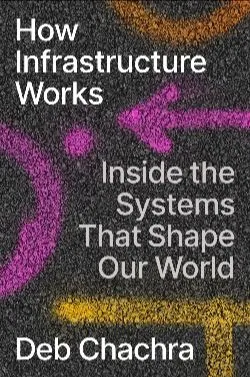
I am, to put it bluntly, a bit of an infrastructure junky. I love to learn about it, I love to observe it, and I love to see how it all fits together. I came of age during the peak of New Urbanist Memes for Transit-Oriented Teens (NUMTOTs), and I lived in Boston during the same period. I’m sure that both of these experiences colored my admiration–and desire–for strong infrastructural systems. One of the first things I try to examine, regardless of where I go, is how the infrastructure functions.
The challenge, of course, is that infrastructure is largely invisible. Chachra’s book does an admirable job of illuminating this veiled component of modern human society. The anticipated audience of the book seems to be one less aware of infrastructural systems than I am, but I enjoyed reading the author’s effusive passion for infrastructural systems, and her push to make them better both for our communities and for future generations.
In Chachra’s (correct, I think) reading, infrastructure is inherently a social phenomenon. It has a network-node structure. It doesn’t make sense to talk about X or Y aspect of infrastructure alone; the very nature of infrastructure is that it makes the entire “map” light up, so to speak. It’s only through this holistic view of infrastructure that it makes any sort of sense at all. No amount of visible megastructures will do this work.
Contained in the book are all sorts of interesting anecdotes about infrastructural projects: bridges, dams, sewage systems, nuclear plants, roads, public transportation lines, and oil pipelines are all included in here. I was especially interested in Chachra’s discussion of the Dinorwig Power Station in Wales.
There is extensive coverage given to the need for equitable infrastructural systems, as well as what makes them fail: namely, neglect. Infrastructural systems are not in the least bit sexy; as a result, budget lines dedicated to their maintenance get axed, and structures fail. This is a much more common occurrence than, say, cyberattacks or bombings. The real problem with infrastructure is the same as its strength: its invisibility.
There’s a nice discussion of the role of climate change in maintaining and planning infrastructural systems, as well as what the “infrastructure of the future” might look like.
It’s definitely worth the read for those curious.